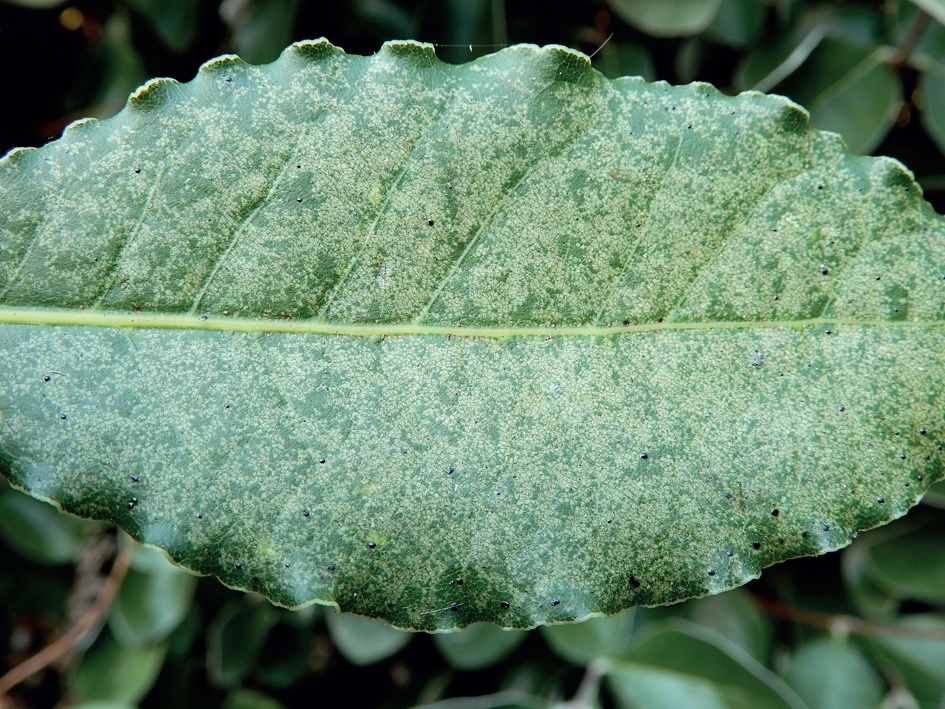11-05-2021
First report of ‘Stephanitis lauri’ in Catalonia, an insect spreading in the European continent
The species Stephanitis lauri ─an hemipteran insect that lives on laurel plants─ has been identified for the first time in Catalonia, according to an article published in the Boletín de la Asociación Española de Entomología. The populations of this insect, firstly found in the province of Girona and then in the province of Barcelona, are the first ones to confirm the presence of the insect in the Iberian Peninsula.
The study that shares data on the first report of the species in the peninsular area is signed by the lecturer Marta Goula, from the Faculty of Biology and the Biodiversity Research Institute (IRBio) of the University of Barcelona, and the advisor on phytopathology Josep Maria Riba.
Stephanitis lauri: from the Greek island Crete to the European continent
The insect S. lauri is a hemipteran from the family of Tingidae (lacebugs), first described by Siegfried Rietschel in the island of Crete in 2014. Since then, many scientific reports had confirmed its presence in several areas of the Mediterranean coast in France and Italy. In Catalonia, the first symptoms of the presence of this insect ─damage in laurel leaves─ were identified in the summer of 2020 by Riba, in collaboration with gardeners of the Girona province.
The discovery of this insect in Catalonia increases the inventory of species of the Stephanitis genus identified in the Iberian Peninsula: Stephanitis (Stephanitis) chlorophana (Fieber, 1861), citated in Ciudad Real, Leiria (Portugal) and Morroco; Stephanitis (Stephanitis) pyri (Fabricius, 1775), an insect that lives in bushes and arboreal plants ─common plague in apple and pear trees─ and which was found in La Rioja, Barcelona, Girona, Tarragona, Valencia and Jaén, among others, and last, Stephanitis (Stephanitis) takeyai (Drake & Maa, 1955), a Japan-native exotic species that spread in India, in many European countries and in the United States, which was located in the Iberian Peninsula in the provinces of Pontevedra and Oporto (Portugal).
Compared to the rest of the species of the lacebugs family in the Euro-Mediterranean region, S. lauri is “the only species related to the laurel plant Laurus nobilis”, notes Goula, lecturer at the Departament of Evolutionary Biology, Ecology and Environmental Sciences of the UB. “Since the species has been described only few years ago, we do not have a good scientific knowledge on its biology yet”, adds the expert.
Lace bugs are small insects, which makes it harder to identify them at naked eye. With the help of field magnifying glass or a binocular stereomicroscope, the expert eye can observe the details in the shape and colour that help to identify the different species. In particular, S. lauri can be mistaken for other native insects ─in particular, S. pyri─, but also for other lace bugs from other genera, such as the sycamore lace bug (Corythucha ciliata).
“The insect settles in the underlayer of the leaves. Like it happens with other tingidae, when it feeds from the host plant, it injects saliva ─which can have a certain degree of phytotoxicity─ with its piercing and sucking mouthparts”, notes Riba.
“The upper surface of the leaf gets spotted in a certain way, with silver-like spots”, continues the expert. “If we make a comparison with what we know about S. pyri, S. lauri individuals could also overwinter in the litter”.
A threat to historical gardens and wild laurel areas
The intense national and international trade of ornamental plants ─such as lauraceous plants, from the laurel family─ could have helped S. lauri to enter the European continent. Scientists do not know whether the simultaneous presence of S. lauri in several European countries is a result of different introduction episodes or the spread of it from an only starting point. In Catalonia, everything points out to the fact that the insect would be in a spreading phase, but monitoring has to continue over time to confirm this hypothesis.
For now, the insect has been found in laurel plants, a typical tree of the Mediterranean native vegetation, found in wet habitats (valley bottoms, shady areas and riverbanks, for instance) and in the ornamental urban green spaces, since laurel is commonly used in gardening. Most of the reports of S. lauri correspond to the urban environment (mainly to public parks and private gardens). However, there have been identifications of damages at the bottom of wild laurel plants, which are relatively close to communication paths, which could be explained by the spread of insects through transport of goods or circulation of vehicles.
As generally seen in all insects, the raise of temperatures could favour the development of S. lauri and the growth of its populations. “The application of urgent measures to control these populations in Catalonia would probably be ineffective, since the species is widely spread in the provinces of Girona and Barcelona. In these cases, we must see how the laurel responds to the attack of the insects, since usually, plants display tolerance and compensation mechanisms against the insects damaging effects”, note the authors.
“Urgent measures could be effective in historical gardens –they add–, given the heritage value of laurel walls and large-sized specimens. In this case, treatments with phytosanitary products authorised in parks and gardens would be appropriate”.
Now, there are a few phytosanitary products whose application in gardening is authorized. In addition, there are not insecticides authorized in the forestry field. All of this makes the phytosanitary management of S. lauri more difficult. “This species is quite spread in the meridional European geography. In addition, although we suspect it is an exotic species due to its behaviour towards a native plant species, the European Union has not said anything about it. In such situations, it is not strange that usual for European-level guidelines are not given”, conclude Marta Goula and Josep Maria Riba.
Source:PressUB
Source:PressUB
